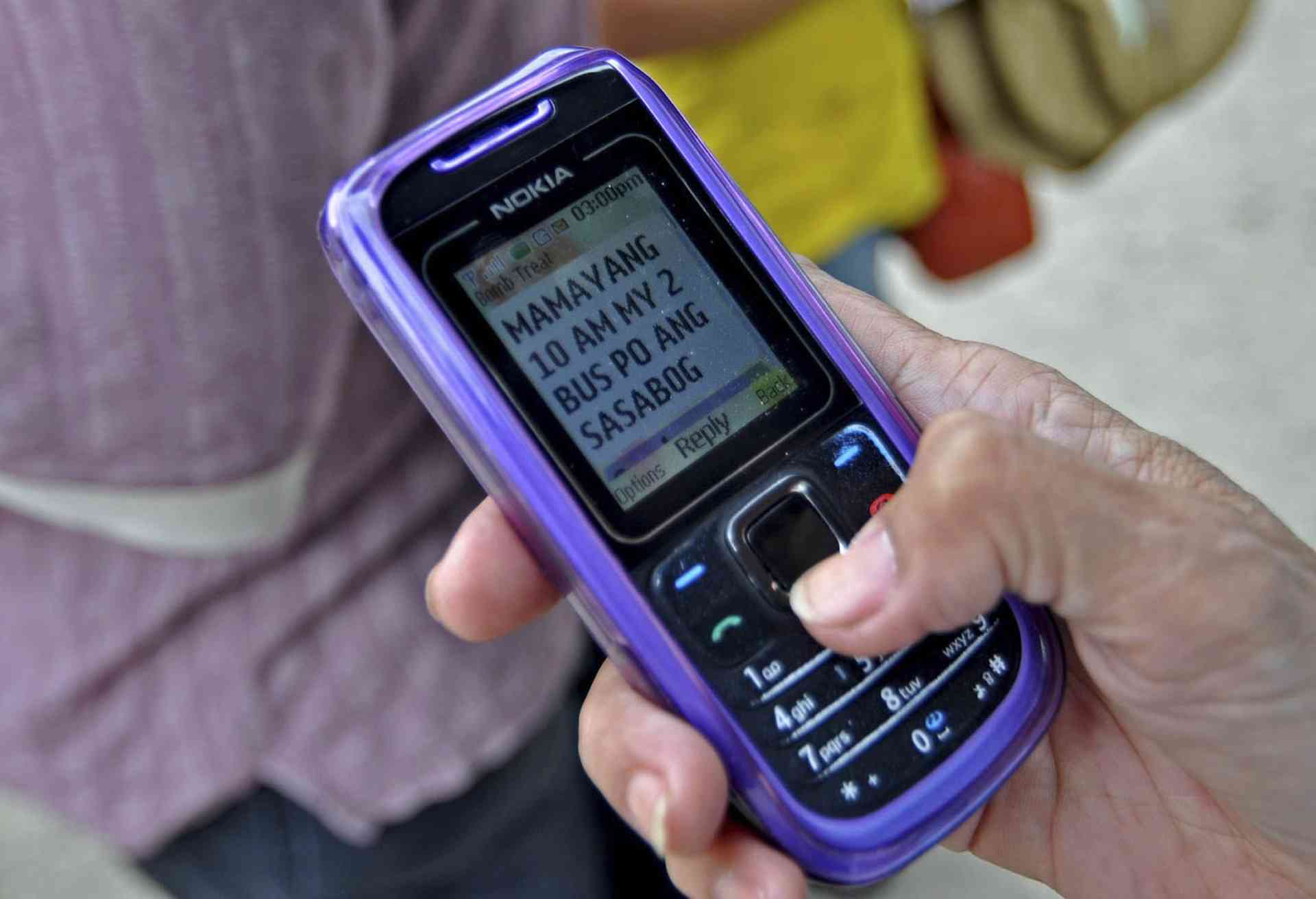WHAT to do now that temperature has been averaging 33 degrees Celsius, with predictions of the heat rising to 40 degrees these sizzling summer months?
News reporters quote experts who recommend a bag of ice under one’s armpits to prevent a heat stroke. Here’s a tastier alternative: What about some ice cream?
The past few years have seen not only the surge of yogurt and gelato shops but of artisanal ice cream as well. Most of us grew up on Magnolia ice cream (who can forget their strawberry and mocha flavors?), but these days there is much more competition in the market, with quality and flavors often becoming decisive factors among consumers.
How do the most popular brands measure up? Here’s what our taste test revealed:
Sebastian Ice Cream: Most Creative
Available at Podium, Mall of Asia and Regis Center in Katipunan; 0927-4537426
The first to break into the artisanal ice cream market was Sebastian’s Ice Cream. Ian Carandang’s Quezo de Bola ice cream became a real hit by word of mouth several years ago and he became the darling of bloggers (the legitimate ones at least). He also made waves with his blue cheese ice cream that he called Once In A Blue Moon, that uses blue cheese whose pungent flavors are balanced out by honey and slightly distracted by walnuts.
Sebastian’s bestsellers include Mango Sans Rival, which tastes like an ice cream version of the cake, and Salted Butter Caramel.
But the experiments have gotten crazier (in a good way) over the years. Last Valentine’s Sebastian’s offered such flavors as Matinong Boyfriend and Matinong Girlfriend. The brand’s Facebook hook read: “Matinong jowawa na hindi available sa market ngayon o kaya naman kulang sa supply. (Good partners not available on the market or in short supply).”
The sold out Boyfriend flavor used fresh raspberries while the Girlfriend flavor was dark chocolate rum ice cream with cookie butter chunks and cinnamon-roasted almonds. Definitely love-worthy creations.
On a more nationalistic note, Carandang has also been playing with Filipino delicacies and turning them into ice cream. A few years back, his Sapin Sapin became a real hit. This ice cream looks like the kakanin (native rice cakes), with layers of purple, red, yellow and white, but it’s all ice cream. There is also Mangga’t Suman.
His latest Pinoy creations are really crazy bordering on genius. He offers a Green Mango sorbet that tastes just like green mango. But when you buy it the server sprinkles bagoong (fermented shrimp paste) on top. For real. It’s like having green mango and bagoong on a stick, as served by vendors on the street, except that this is a sorbet version!
Still not over laughing at this, I tried the Champorado, a Filipino breakfast favorite served as a soupy rice porridge cooked with tablea (native chocolate balls), and usually topped with something salty, like dried fish. Sebastian’s offers a chocolate ice cream that really resembles the flavors of champorado. But the kicker is that the waiter then sprinkles dilis on top! It looks odd but it surprisingly works!
What makes Sebastian’s stand out from the rest, aside from the obvious creativity, is how Carandang plays with textures and not just flavors. The brand recently launched a hopia (bean cake) flavor that amazingly has that sticky, chalky texture of hopia. You smile then scratch your head and laughingly wonder, “How?!”
I wouldn’t be surprised if this ice cream wizard later comes up with flavors like Adobo and Kare-Kare!
Adam’s Seriously Good Ice Cream: Seriously Good
Available at The Legazpi Market in Legazpi Village, Makati across Union Church on Sundays
Adam Lieber is an American who used to come to the Philippine for work and ended up living here. He opened the restaurant Rose (now closed) at the Fort before deciding to focus on ice cream. It’s funny that he calls his ice cream “Adam’s Seriously Good Ice Cream” but the thing is, it is seriously good.
The Ambassador’s Butter Cream, a flavor created as a tribute to then US Ambassador Harry Thomas, is rich and creamy with organic almond brittle added for texture. The Strawberry Buko (young coconut) uses fresh strawberries carefully chosen by Adam himself, who says it’s part of his commitment to making “seriously good” ice cream. (He doesn’t use the strawberries if they are less than excellent.)
My favorite among his creations, though, is something that he created for former First Lady and now Congresswoman Imelda Marcos. Apparently one of the Marcos children lamented that the former First Lady would not be able to appreciate this seriously good ice cream because she is diabetic, which inspired Adam to create this flavor called The First Lady’s Fantasy. He tried experimenting with artificial sugar but found it no good, so he researched and found out that coco sugar can be used by diabetics. After countless trials and errors, The First Lady’s Fantasy is today the best diabetic-friendly chocolate ice cream out there.
Carmen’s Best: Creamiest
Available at the Salcedo Market at Velasquez Park in Salcedo Village, Makati on Saturdays 7 a.m. to 2 p.m.
The family of Paco Magsaysay (whose dad is former senator Jun Magsaysay) owns a grand dairy farm that sells 100 percent pure milk products. With the farm’s oversupply of milk, Paco started to toy around with ice cream ideas, with YouTube as his first teacher. It was for personal consumption anyway, he thought. But he awed his own taste buds and realized he could make a lot of really good ice cream.
“If you have the best dairy, you can make the best ice cream,” he concluded.
His common sense resulted in Carmen’s Best, the creamiest artisanal ice cream in the market. In its naked glory (if you put all the different brands of ice cream beside each other minus the borloloy of pimped flavors), Carmen’s Best would outshine the rest. Its secret is the milk. Premium ice cream uses 14-16 percent butterfat; Carmen’s Best uses more than that because its milk is 100% pure, clear of cheat ingredients like vegetable fat that commercial ice cream makers use.
Carmen’s Best ice cream is also more dense. A pint can weigh as heavy as a half gallon-sized ice cream. That means its ice cream is not pumped with air, a practice among most commercial ice cream makers.
The people behind the brand do not scrimp on ingredients as well. Real pistachio nuts are used generously for the pistachio ice cream and you call tell. You can also taste the caramel in the Salted Caramel flavor, its bestseller, which reminds you of the caramelized top of a really good leche flan.
Since his YouTube days, Paco has taken this craft seriously, taking a summer course on how to make ice cream at no less than the University of Pennsylvania. He bested 150 other students and received a Phil Keeney Award as the most promising ice cream maker of the lot. Indeed he is!
Fog City Creamery: Best Use Of Ingredients
Available at Focaccia restaurant in A. Venue, Makati Ave.; +63 917-8833344
Fog City Creamery markets itself as “All Natural, All Best”. But what’s even better is how the “all natural, all best” ingredients are highlighted in every pint.
The Ensyamada flavor, for instance, not only reminds you of ensaymada with ice cream, but the chunks of cheese sprinkled on top could convince you that you’re eating a real ensaymada.
The Ovaltine ice cream is made memorable by the incorporation of chunks of Ovaltinees, while the Bittersweet Chocolate Orange has candied orange peel for oomph.
It’s not as crazy as Sebastian’s but creative in its own, luxe way. A real delight.
Other Artisanal Ice Cream Brands
Mad Mark’s is at 23 East Kapitolyo; Pinkerton available in Rustan’s Supermarket
The list doesn’t end there. Over at Kapitolyo, there is Mad Mark’s Ice Cream (try the Sumatra Arabica Biscotti), and Rustan’s Rockwell carries Pinkerton Ice Cream, which has its own Salted Caramel version and now offers a Roasted Banana Don Papa using Don Papa rum. Not quite like Sebastian or Carmen or Adam but enjoyable nonetheless!
With all these ice cream choices, bring on the 40-degree weather. We’re ready! •
If You Can’t Lick ‘Em, Make ‘Em Pinoy
How ‘dirty ice cream’ came to be
During the American occupation, the Americans introduced ice cream to the Philippines.
Magnolia ice cream in the Philippines traces its history as far back as 1899 when the American William J. Schober arrived in the Philippines and introduced “Magnolia ice cream” and “Magnolia ice-drop.” He sold his business interest to San Miguel Corp. in 1925. The company then opened a dairy plant for the production of ice cream on Calle Aviles in San Miguel, Manila (later relocated to Calle Echague, now C. Palanca St., in Quiapo).
But the first ice cream parlor was opened by M.A. Clarke or “Met” Clarke, an American entrepreneur. Clarke’s Ice Cream Parlor was established around 1920 in Escolta, at the foot of the Puente de España (Bridge of Spain; replaced by Jones Bridge) on Calle Nueva (now E. T. Yuchengco Street).
Meanwhile, Filipinos indigenized American ice cream by creating sorbetes out of locally-available ingredients. Cow’s milk was replaced with the cheaper (but creamier) carabao’s milk. And local flavors such as mango, avocado, melon, langka (jackfruit), yam and coconut were used. The sorbetes is peddled by street vendors, giving rise to the sobriquet “dirty ice cream”.
The “dirty ice cream” vendor or “Mamang Sorbetero” who pushes a gaily-painted wooden cart with three large metal canisters of ice cream with different flavors, has become an icon of Philippine pop culture.
Frozen in Time
A brief history of ice cream
IN the Western world, the first form of ice cream is said to have been from the time of Roman emperor Nero, who ordered slaves to fetch ice from the mountains and to combine it with nectar, fruit pulp, fruit toppings and honey, sometime between 40 and 68 AD. Some people however debunk this as a myth.
Instead, food historians point to the first documented recipe for something resembling a sherbet, which had evolved into a recipe for ice cream. The recipe supposedly came from China sometime in the 16th century, thanks to Italian explorer Marco Polo.
The recipe is said to have been a royal secret of Kublai Khan’s Yuan Dynasty (after he conquered the Southern Song dynasty in China) whose origins go as far back as the T’ang Period (618 – 907 AD), when King T’ang of Shang kept 94 “ice men” on hand to make this delicacy for the dynasty’s rulers.
Understand that there were no freezers back then and therefore no artificial ice. The ice would have been gathered from snow-capped mountains!
After Marco Polo “introduced” the sherbet recipe to Italy, Catherine de Medici brought a similar frozen dessert to France when she married Henry II. In France, the Sicilian Procopio introduced a recipe blending milk, cream, butter and eggs at Cafe Procope, the first cafe in Paris, in the 1600s.
Later, in the 18th century, American colonists brought along ice cream recipes from Europe.
The first written account of ice cream consumption was from a dinner held on May 19, 1744 in the home of Maryland governor Thomas Bladen, where guests were served “a dessert… some fine ice cream… with strawberries and milk.”
Then on September 9, 1843, Nancy M. Johnson of Philadelphia got her “artificial freezer” patented, a contraption composed of a tub, cylinder, lid, dasher, and crank. This was the first patented ice cream machine.
In the 1930s, grocery stores started selling ice cream and by World War II, it became some kind of American symbol. This prompted then Italian Prime Minister Benito Mussolini to ban ice cream in Italy, where it was ironically first introduced to the world.









































